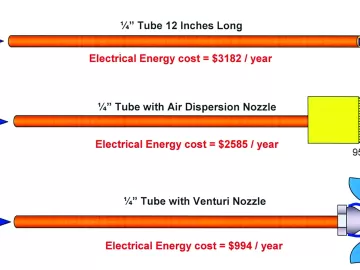Energy-Savings at Milk, Cheese, and Ice Cream Plants
Compressed air system refinements have cut operating costs at a Milk Plant located in Winnipeg Manitoba, Canada by 62%, for annual savings of nearly \$30 000. The improvements were made following a compressed air audit that recommended consolidating two compressed air systems into one, installing a variable speed drive compressor, and making a handful of additional basic improvements.












